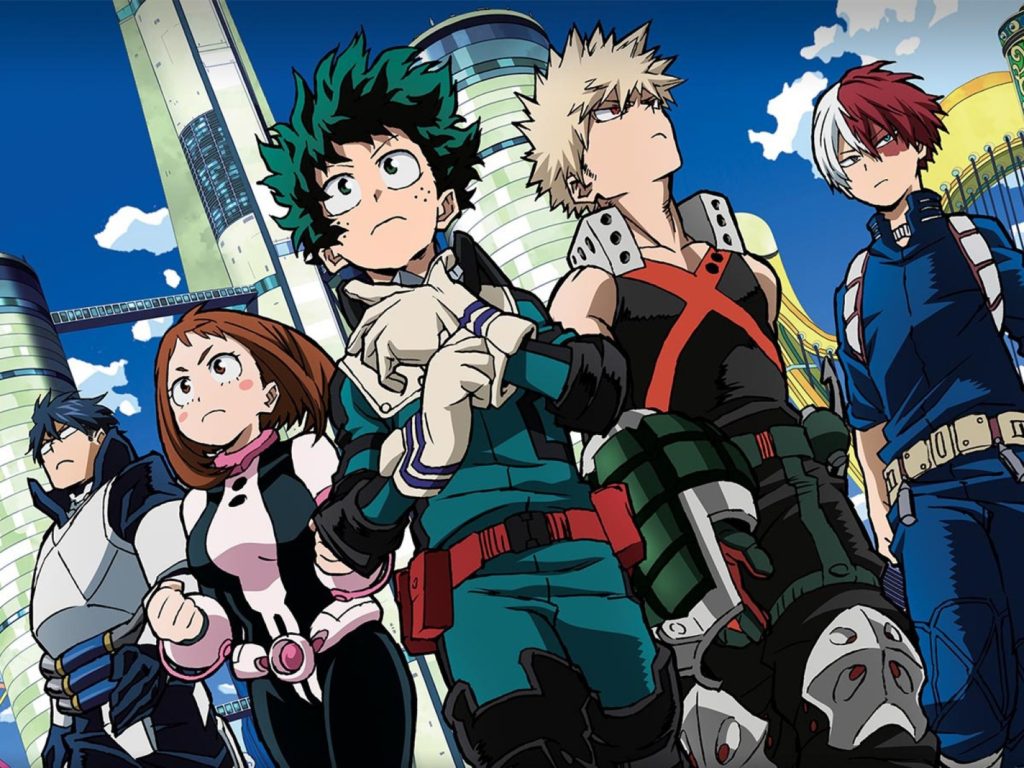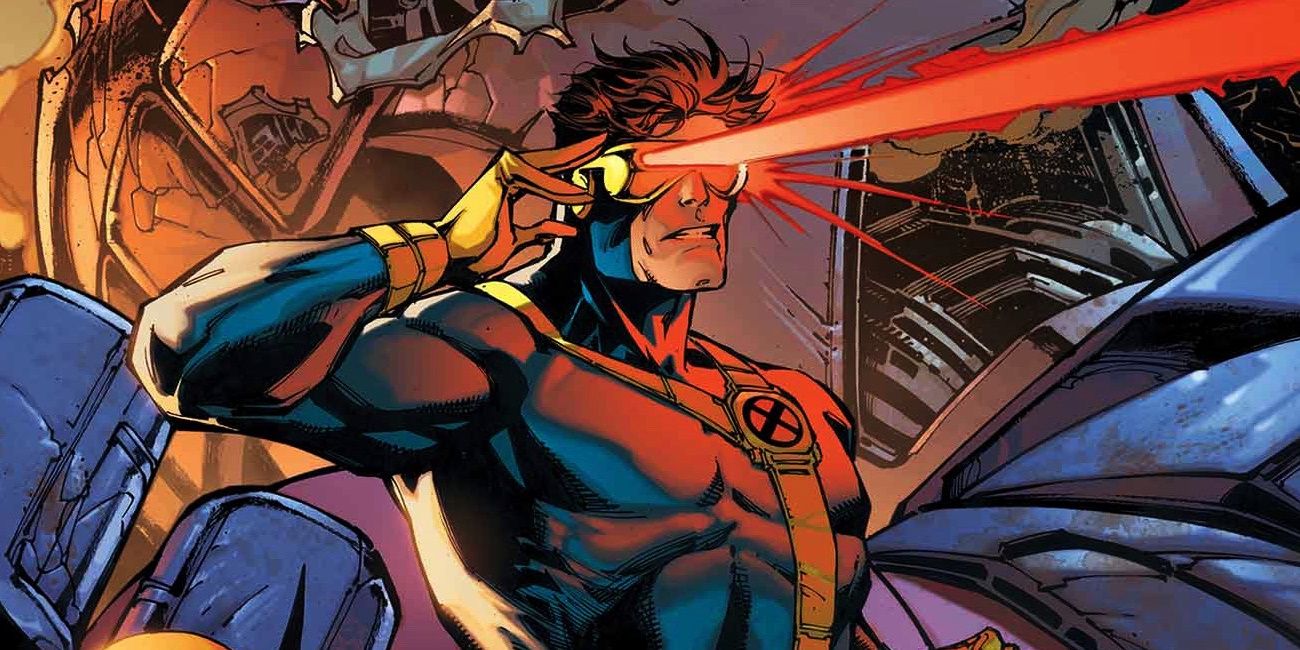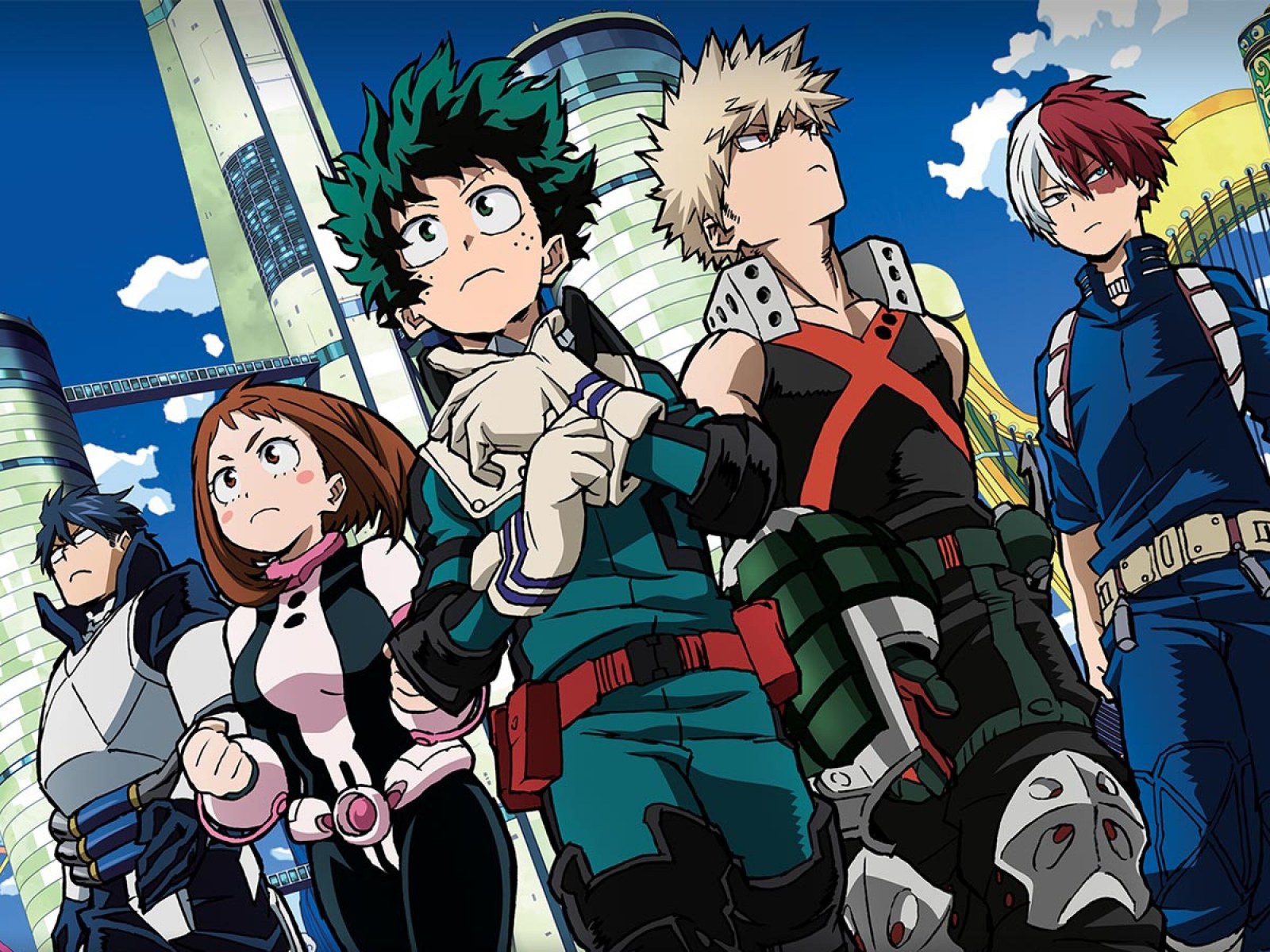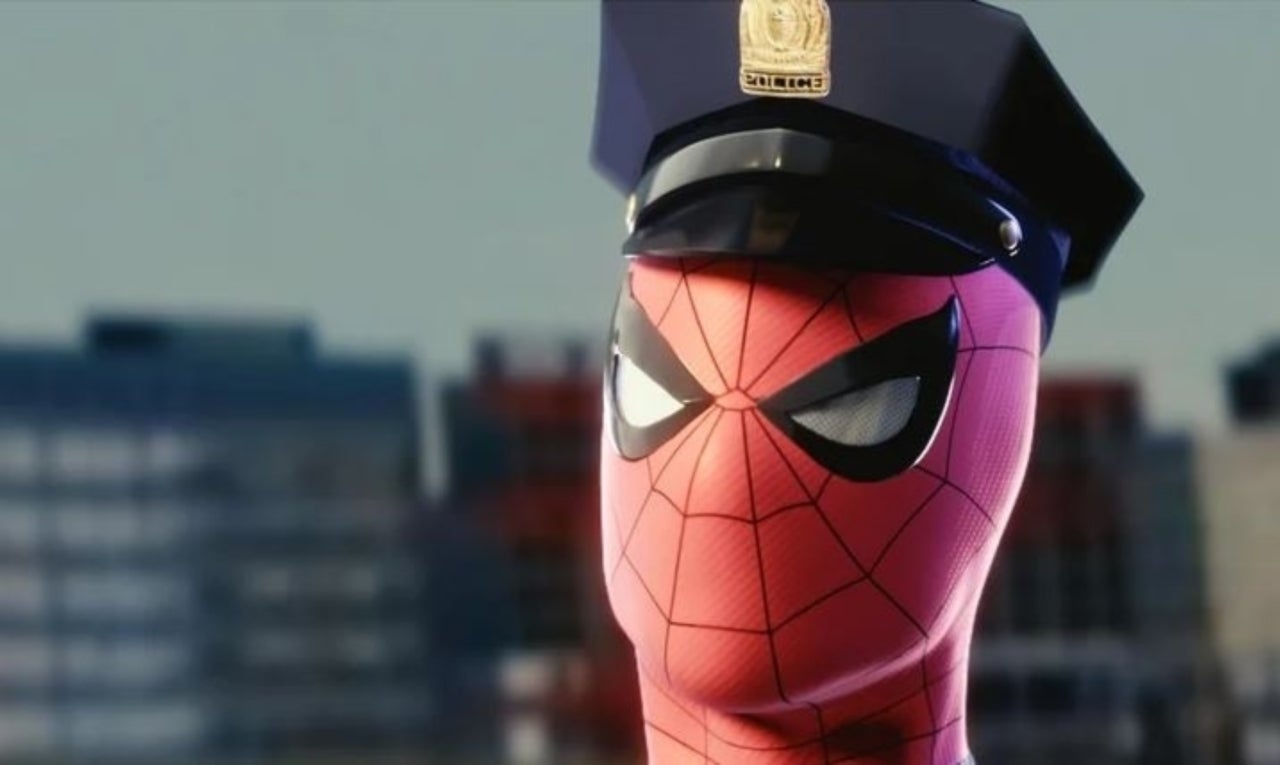
My Hero Academia Exemplifies the Tension I Feel When Consuming Superhero Media
The success of My Hero Academia in the West, particularly the United States, is not surprising, given our cultural love of super heroes. Avengers: Endgame took top spot as the world’s highest grossing film just last year, netting over $800 million in domestic box offices alone. We have long been enamored with superheroes, and services like Funimation, Crunchyroll–and even Hulu and Netflix–have made it easier than ever for Americans to access anime, giving MHA another hungry audience.
The most novel part of MHA’s take on super heroes is that they’re the norm, both in that they exist culturally and that 80% of the world’s population has some kind of superpower. While Peter Parker is 1 in a million in relation to the general population, Deku and crew are 4 out of 5. In this world, it’s exceptional to be ordinary. This inversion is important because it highlights a major flaw present in both superhero fiction, science fiction, and fantasy: people with powers are depicted as being a marginalized group. This is generally used by creators to draw parallels to real life marginalized people. The thing with this though, is it’s a faulty and dangerous comparison.
While hero/mage/biotic stories all share the notion of being oppressed for something that you were born with that you had no control over, these things are a false equivalency compared to being from an oppressed racial group/gender identity/sexuality. While it’s true that these characters have no power over the abilities they were born with, they are still inherently dangerous. There’s no way to get around the fact that Cyclops is a man who can laser you into dust if he’s not wearing sunglasses. Comparing that to being black or trans, for example, is a problem because it reinforces the idea that marginalized people are inherently dangerous to themselves and others, especially since most of these comics do little to nothing to address real-life issues of privilege in regards to their largely white, cis, male characters.
Now, this isn’t the case in MHA. Most people have some sort of quirk–the term the anime uses to refer to superpowers–and many have extremely powerful ones. Because of this, we’re able to see a more honest portrayal of what a society with superpowered people would look like; under the continued conditions of capitalism, nothing really changes. Pretty much every villain in MHA is someone from the margins who is dissatisfied with the status quo. That, combined with their powers, allows them to move away from society and take what they feel they need or deserve. This isn’t all that surprising given that there’s a tangible link between poverty and violent crime in the real world.
And here lies the crux of the issue: when framed in this way, the question of who the villains really are becomes pretty clear, and it’s not our antagonists. At multiple points throughout the series, heroes are faced with villains who have perfectly reasonable explanations for why they turned to crime: they were rejected by society, they were left poor and with nothing, they were treated as less than for being true to themselves. Even as the heroes acknowledge these circumstances and their frankly fucked up natures, they generally have no solution beyond still handing these people over to the police.
Beyond that, the series’ main antagonists make it clear that they view superheroes as state sanctioned agents of violence who value fame and money over doing material good. While all of them are depicted as deranged and having been pushed way too far over the edge to be worth actually listening to, they’re right.
In MHA’s Japan, every person born with powers is registered by the government. Superheroes go through multiple phases of licensure, and only licensed heroes can use their quirks in public. But despite that, superhero agencies are private businesses that focus on combining emergency service work with maintaining a high level of celebrity. So when people like Stain, or Shigaraki cause disturbances, it is in the heroes’ best interests to crush them rather than hear them out. Not only are Stain and Shigaraki enemies of the state, they’re enemies of a culture that has completely glamorized hero work and effectively turned it into a popularity contest for no apparent reason.
These conflicts, while frightening given the nature of the villains’ quirks like Shigaraki’s Disintegrate, are at least on a somewhat equal footing when it comes to close combat. Though All Might and the other heroes have the backing of the government, in a one on one fight, everyone involved at least has superpowers. This relative power balance makes the general lack of one in other superhero media even more apparent.
Consider Superman and Lex Luthor: while Luthor is brilliant and the campiness of comics allows for far-fetched counters to Superman’s overwhelming power, the fact remains that Superman is an ultra-powerful, almost god-like being, and Luthor is a glorified Mark Zuckerberg. The power imbalance is striking, and shows just how deep the American hunger for authoritarian criminal justice runs.
Our system is already brutal, with 558 people already shot dead by police in the United States this year alone. Now imagine adding people who could kill you by looking at you into the mix. It’s a horrible, and honestly frightening combination, but it’s one that most American superhero fiction is entirely here for. From Insomniac’s Spider-Man (2018)’s Peter Parker jubilantly referring to himself as “Spider-Cop,” to Batman’s whole deal consistently revolving around brutalizing mentally ill people and repeatedly throwing them into broken mental health and justice systems, we love the idea of getting to punish criminals even harder before they’ve even faced arrest or even trial.
Though Batman’s “no killing” rule is often held up in defense of his overall morality, particularly in contrast to Injustice 2’s trigger-happy Superman, we have to examine the violence he inflicts. Though he lacks superpowers, Bruce Wayne has access to enormous wealth that allows him to be the strongest and fastest he physically can be, not to mention all of his non-lethal yet probably very painful gadgets. Characters like Superman, Captain America, and Wonder Woman are all on an even higher level physically. While still not great, it would be one thing if these superpowered (I’m counting wealth as a superpower here as well) characters were reserving their abilities for the supervillains with similar strengths, but more often than not we see them wailing on street level criminals.
Aside from having reduced odds in general, these criminals are then faced with people they couldn’t possibly hope to defeat in combat coming after them outside the confines of the law. Vigilantism could be a powerful tool of subversion to highlight the failings of our justice system, but instead, Western superhero fiction creates the exact society that the villains of MHA so fiercely oppose: one where heroes are another arm of state subjugation that lives outside the law, one that completely eradicates the notion that there’s anything keeping us safe from the police. Even if they can’t get a warrant, Batman can just stalk you.
We need to examine why we’re being sold the power fantasy of the superhero. Why we’re expected to root for the people who are consistently anything but underdogs. Why we’re meant to cheer for the people in capes and C-suites, when in reality, more often than not we’re the people with crowbars or in cubicles.








